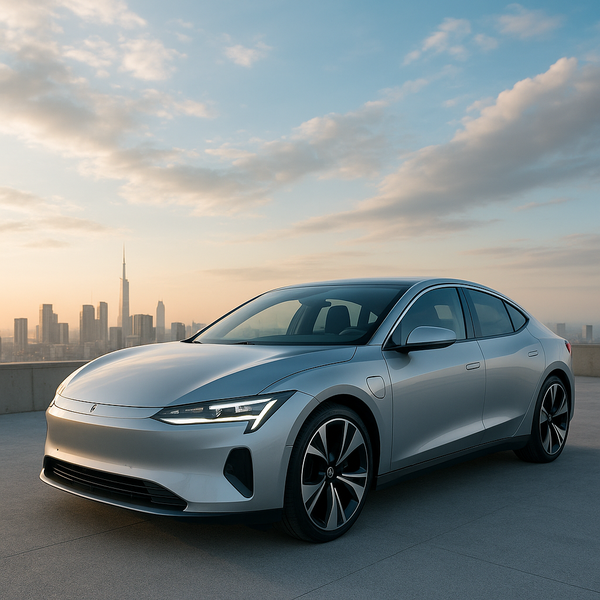
The automotive world is undergoing a rapid transformation, driven by breakthroughs in technology, sustainability, and connectivity. From electric powertrains pushing the boundaries of efficiency and performance to sophisticated autonomous systems promising a new era of safety and convenience, the innovations emerging today are redefining what a vehicle can be. This evolution isn't just about getting from point A to point B; it's about integrating our cars more seamlessly into our digital lives while minimizing our environmental footprint.
The Electric Revolution Accelerates
At the forefront of automotive innovation is the dramatic shift towards electrification. Electric Vehicles (EVs) are no longer niche products; they are becoming mainstream, offering zero-emission driving, instant torque, and quieter operation. Beyond just replacing the internal combustion engine, the development of advanced battery technology is a major innovation driver. Solid-state batteries, for instance, promise higher energy density, faster charging times, and improved safety compared to current lithium-ion technology, potentially revolutionizing EV range and practicality.
Beyond the Battery: Powertrain Innovations
While EVs dominate the innovation headlines, advancements in traditional and alternative powertrains continue. Hybrid technology is becoming more sophisticated, with plug-in hybrids offering greater electric-only range. The efficiency of gasoline and diesel engines is still being improved through technologies like variable compression ratios, advanced turbocharging, and sophisticated fuel injection systems. Furthermore, hydrogen fuel cell technology remains a promising area, particularly for heavy-duty transport, offering zero emissions and quick refueling.
The Rise of Autonomous Driving
Perhaps the most futuristic aspect of automotive innovation is the push towards autonomous driving. While fully self-driving cars (Level 5 autonomy) are still some years away for widespread deployment, advanced driver-assistance systems (ADAS) are becoming increasingly common. These systems, utilizing a complex array of sensors including cameras, radar, and lidar, enable features like adaptive cruise control, lane keeping assist, automatic emergency braking, and even hands-free driving in certain conditions. Innovations in machine learning and artificial intelligence are crucial to processing the vast amount of data these sensors collect, allowing vehicles to perceive their environment and make driving decisions safely.
Connectivity and the Connected Car
Modern vehicles are essentially computers on wheels, constantly connected to the internet and other vehicles. This connectivity enables a wealth of innovative features. Over-the-air (OTA) updates allow manufacturers to improve vehicle software, add new features, and even fix bugs remotely, much like updating a smartphone. Vehicle-to-everything (V2X) communication is another significant innovation, allowing cars to communicate with traffic infrastructure (V2I), other vehicles (V2V), pedestrians (V2P), and the network (V2N). This interconnectedness has the potential to dramatically improve traffic flow, reduce congestion, and enhance safety by providing real-time information about road conditions, hazards, and traffic signals.
Interior Innovations: Comfort, Convenience, and Sustainability
Inside the car, innovations are focused on enhancing the user experience and sustainability. Large, intuitive touchscreens and digital instrument clusters are replacing traditional buttons and dials, offering customizable displays and seamless smartphone integration via Apple CarPlay and Android Auto. Augmented reality head-up displays project navigation directions and other vital information onto the windshield, allowing drivers to keep their eyes on the road. Sustainable materials are increasingly being used for interiors, ranging from recycled plastics and fabrics to plant-based materials, reducing the environmental impact of vehicle production.
Manufacturing and Design Innovations
The way cars are designed and built is also evolving. Modular vehicle platforms, particularly common for EVs, allow manufacturers to build a variety of different models on the same basic architecture, increasing efficiency and reducing costs. Advances in 3D printing are being used for prototyping and even producing certain components. The use of lightweight materials like carbon fiber and advanced aluminum alloys is increasing to improve fuel efficiency and performance. Aerodynamic design is becoming more sophisticated, not only to improve efficiency but also to reduce wind noise and enhance vehicle stability.
Safety Innovations Continue to Advance
Safety has always been a core focus of automotive development, and innovations continue to make cars safer. Beyond passive safety features like airbags and crumple zones, active safety systems are becoming standard. Electronic stability control, anti-lock braking systems, and traction control use sensors to help drivers maintain control in challenging situations. The integration of AI and machine learning is improving the effectiveness of autonomous emergency braking and pedestrian detection systems. Future innovations may include predictive safety systems that can anticipate potential collisions before they happen.
Challenges and the Road Ahead
Despite the rapid pace of innovation, challenges remain. The infrastructure for charging EVs needs significant expansion. The cost of advanced technologies like lidar and powerful computing for autonomous driving needs to decrease for widespread adoption. Cybersecurity is paramount as cars become more connected. However, the trajectory is clear: the automotive industry is heading towards a future of vehicles that are cleaner, safer, more connected, and increasingly automated, promising an exciting new era for transportation.
The ongoing evolution of automotive technology presents a fascinating landscape of possibilities for how we travel. From the quiet hum of electric motors to the complex algorithms guiding autonomous systems, these innovations are not just incremental improvements; they are foundational shifts. As research and development continue, we can expect even more transformative technologies to emerge, further shaping the vehicles we drive and the way we interact with our world, pushing the boundaries of performance, sustainability, and user experience.

